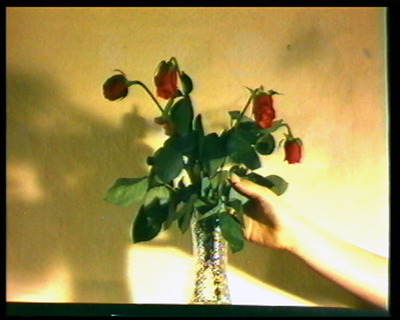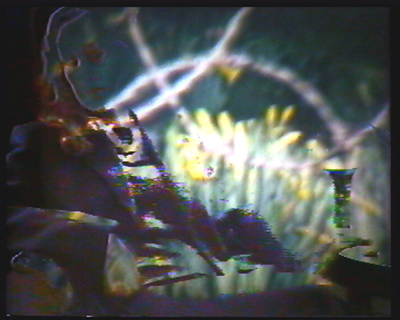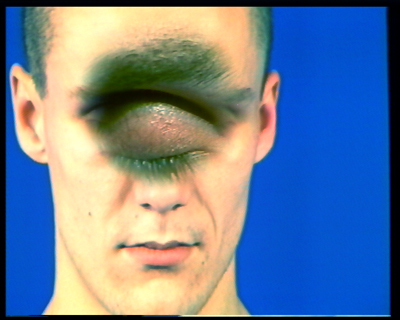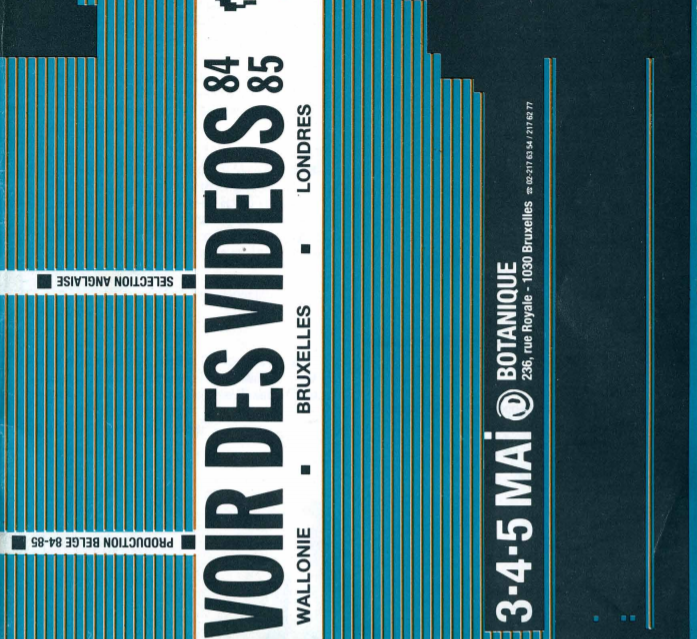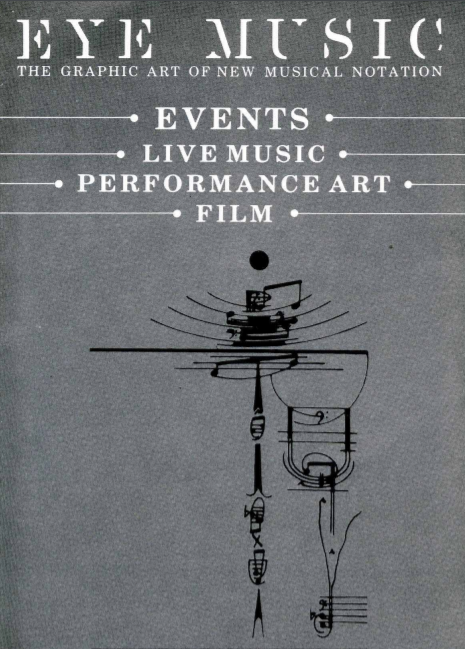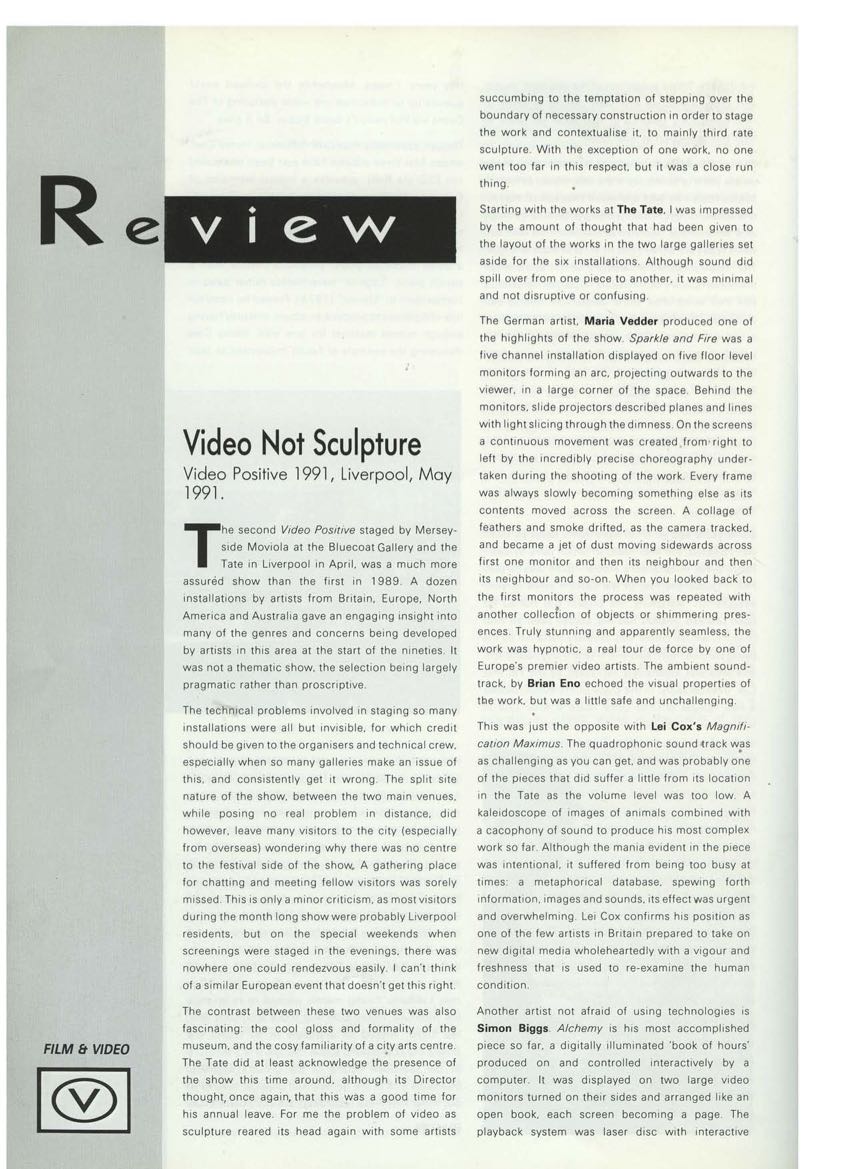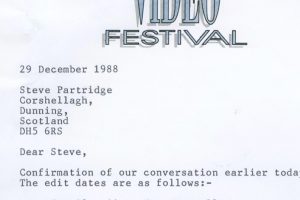Goddard, Judith
Judith Goddard studied at the Univeristy of Reading and Royal College of Art, London, and has taught at the Rijksakademie, Amsterdam, and the Slade School of Art, London. She began making videos in 1981, both single screen and large-scale installations that have been shown widely both in the UK and abroad. Associated with the second wave of video art in the UK, Goddard developed a rich visual style in works such as ‘The Garden of Earthly Delights’ (1991), a video triptych that offers a fragmented, dystopian view of life in the 1990s in the spirit of Hieronymus Bosch. Recent shows include ‘100 years of Artists’ Film and Video’, 2003-04 at Tate Britain; ‘Collage’ at Bloomberg Space, 2004; ‘Wonderings’, at Great Eastern Street, 2005; ‘Cross-Town Traffic’ in Delhi, India, 2005 and ‘Mobile’, in Paris, 2006.
“Goddard’s work on screen attempts to visualise concepts through images of external objects and events that by a process of manipulation of time and the moving image (editing, use of sound etc.) also become metaphors for internal states.” Michael O’Pray.
Judith Goddard continues to work on moving image as well as with stills, collage and more recently print. She lives and works in London.
– Catherine Elwes and Chris Meigh-Andrews (editors), 2006, ‘Analogue: Pioneering Video from the UK, Canada and Poland (1966-88)’, Exhibition Catalogue, EDAU Preston
-
Interview of Judith Goddard
View the interview transcript here
-
Videography:
1982
Go Into Your Fridge (or Stilted Life)
Time Spent1983
Under the Rose
You May Break1984
Lyrical Doubt
Who Knows the Secret?1985
Monstrous Races
Celestial Light and Monstrous Races1987
Electron
Television Circle / Electron (7 screen installation)1989
Urban Turner / First Light1990
Glasgow – A Bluish-Green (19.4.90 Television Interventions C4)
Luminous Portrait (One Minute TV, BBC)1991
Garden of Earthly Delights (3 screen installation, Video Positive, Liverpool)1993
Reservoir (4 screen)1995
Helen’s Room1998
Night -
Artist works:
-
Artist assets:
-
Quotes:
"British Video artist Judith Goddard (1956-, UK) was first attracted to video for the quality of the colour and the aesthetic of the television image as a light source. She initally experimented with 16mm film, but was restricted to durations of less than three minutes because of production costs. Goddard found colour video suited her sensibility, especially the way it treated light and, because it was a less expensive medium, she was able to work with duration to explore notions of time and visual experience:
"Colour made a fantastic difference to the work and I wanted to have more of it. Video offered the moving image in colour and a 20-minute tape. I loved working with colour - still do ... I was doing things like using an incredibly long focus-pull; the work was about 'looking'. I came out of a backgound in which the materiality of film was important, and so I started thinking about video in that way. But then I wanted to exploit the qualities of video as a medium in its own right. For example the fact that the light and colour emanates form the screen which, is quite different from projected light... the screen has always been significant to me, and whether the image was projection, or on a monitor was crucial. With video the fact that the light was coming out of the screen was really important, I had always liked Dutch painters like Rembrandt and Vermeer because they used light in that way."
Judith Goddard in conversation with the author, 7 February 2005.
Chris Meigh-Andrews, A History of Video Art. Berg, 2006.













